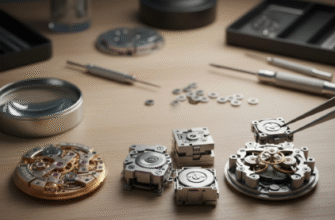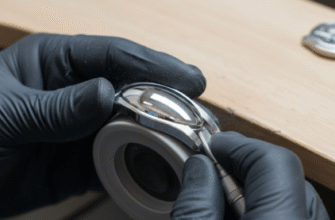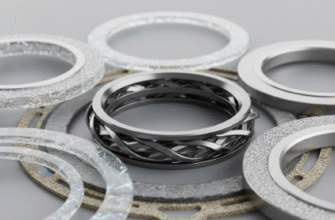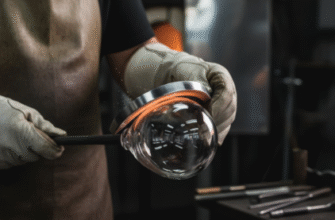The principle of gravity compensation is the raison d’être of the tourbillon. Without this mechanism, the pull of gravity would subtly but consistently accelerate the balance wheel when it is on the ‘downswing’ of its oscillation and retard it on the ‘upswing’. This uneven influence, though minor in each individual swing, accumulates over time, leading to measurable inaccuracies in the watch’s rate. The error is not constant but varies depending on the watch’s orientation relative to the Earth’s gravitational field. In traditional pocket watches, which spent significant time in a waistcoat pocket in a vertical orientation, this positional error was a major hurdle to achieving chronometric excellence.
The fundamental problem the tourbillon addresses is positional error—the change in a mechanical watch’s rate of timekeeping due to its varying orientation with respect to gravity. Breguet’s solution was to mount the entire escapement and balance assembly within a rotating cage, ensuring that any gravitational error introduced during one segment of the rotation is effectively canceled out during the subsequent segment. This rotational averaging smooths out the deviations caused by Earth’s constant downward pull.
The Mechanics of Rotation: The Tourbillon Cage
The signature component of the tourbillon is the rotating carriage or cage. This intricate, lightweight structure houses three critical elements: the escape wheel, the pallet fork, and the balance wheel with its hairspring. Instead of fixing the escapement to the mainplate of the movement, the entire assembly is mounted within this cage, which itself is driven to rotate, typically once per minute, although variations exist (30-second, four-minute, or even six-minute rotations). The rotational speed is a deliberate choice, often set to sixty seconds to allow the seconds hand to be directly mounted onto the carriage or an associated element, offering a visually compelling indication of time.
To understand the compensatory action, one must visualize the balance wheel’s motion within the gravitational field. Imagine the watch is oriented vertically. As the cage turns, the balance pivots—the delicate, minuscule axles on which the balance wheel oscillates—are subject to friction. This friction, along with the influence of gravity on the mass of the balance, is not uniform in all positions. When the watch is vertical, the oil film on the pivots might distribute unevenly, or slight imperfections in the pivots themselves might cause the rate to be faster in one 180-degree arc of the cage’s rotation and slower in the opposite arc.
The brilliance of the tourbillon is that as the cage completes a full revolution, the balance wheel experiences every possible vertical orientation. For instance, an error that causes the watch to run fast when the balance staff is at a 12 o’clock position will be precisely or near-precisely balanced by a corresponding error causing it to run slow when the staff is at the 6 o’clock position later in the rotation. Over the course of the full rotation, these accelerating and decelerating forces average out, resulting in a more consistent and theoretically more accurate rate of timekeeping. The rotational period, usually one minute, acts as an averaging period.
Driving the Rotation: The Power Train Interface
The complexity of the tourbillon lies in its unique gear train configuration. In a standard watch, the fourth wheel drives the escape wheel. In a tourbillon, the fourth wheel (or its equivalent in the tourbillon gearing) is fixed to the mainplate and acts as the stationary wheel or sun wheel. The tourbillon cage, which holds the escape wheel, also carries a pinion (the planetary gear) that meshes with this fixed fourth wheel.
As power is delivered from the mainspring barrel through the rest of the gear train, it drives the tourbillon cage itself to rotate around the fixed fourth wheel. Simultaneously, as the cage rotates, the escape wheel is driven by the pinion meshing with the stationary fourth wheel. This dual-action drive—the cage rotating and the escape wheel simultaneously turning within the cage—is what provides the energy to keep the balance wheel oscillating and the entire mechanism in motion.
The delicate balance between the torque required to rotate the cage and the need for precision in the escapement is a constant challenge for the watchmaker. The cage must be lightweight to minimize the energy drawn from the mainspring, yet rigid to maintain the precise alignment of the escapement components. The rotational mass introduces kinetic energy considerations that are absent in a fixed escapement, demanding careful dynamic balancing of the cage itself to prevent isochronal errors introduced by the rotation.
Variations on the Compensatory Theme
While the original Breguet tourbillon focused on compensating for errors in vertical positions, modern horology has introduced several variations to tackle the problem from different angles, particularly adapting the mechanism for wristwatches where the timepiece constantly changes orientation.
The Inclined Tourbillon
The inclined tourbillon or sloping tourbillon (as seen in some movements by Greubel Forsey or Jaeger-LeCoultre) mounts the rotational axis of the cage at a slight angle—perhaps 25∘ or 30∘—relative to the mainplate of the movement. This design ensures that the regulating organ is exposed to a greater range of orientations even when the watch is lying flat (horizontal position), thus providing a more effective averaging action for a wider range of wearing angles common to the wrist.
The Double-Axis and Multi-Axis Tourbillon
Perhaps the most radical departure is the multi-axis tourbillon (sometimes called a gyrotourbillon). These mechanisms employ two or more concentric cages rotating on different, usually non-parallel, axes. A typical double-axis tourbillon might have an inner cage rotating on its axis, which is then housed within a larger, slower-moving outer cage rotating on a second, orthogonal axis. This complex, three-dimensional rotation exposes the balance wheel to an even greater spectrum of gravitational vectors in a relatively short period, providing superior positional error compensation for a constantly moving object like a wristwatch.
It is important to recognize that in the modern era, with highly advanced materials, manufacturing tolerances, and lubrication techniques, the practical chronometric benefit of a tourbillon is often debated. Contemporary watch movements can achieve excellent timekeeping accuracy without the complexity and cost of a tourbillon. Therefore, the mechanism today serves as much as a demonstration of horological artistry and traditional craft as it does a strict functional necessity for timekeeping precision.
The Flying Tourbillon
The flying tourbillon (invented by Alfred Helwig in 1920) is a design innovation focused on aesthetics and visual transparency. Unlike the traditional design, which has a bridge supporting the cage from both above and below, the flying tourbillon is cantilevered, supported only from beneath the mainplate. This absence of an upper bridge allows for an unimpeded view of the rotating mechanism, enhancing its visual impact. The compensatory principle remains identical, but the challenge lies in ensuring sufficient stability and rigidity with support only from one side.
In essence, the design principles of gravity compensation in a tourbillon revolve around mathematical averaging and mechanical rotation. The mechanism transforms the persistent, unidirectional force of gravity from a source of error into an averaged, neutralized influence on the timekeeping rate. It is an exquisite microcosm of precision engineering, a dynamic sculpture in miniature that continues to define the pinnacle of mechanical watchmaking.
$$\text{Positional Error} \propto \frac{1}{\text{Rotational Period}} $$\ \$$







